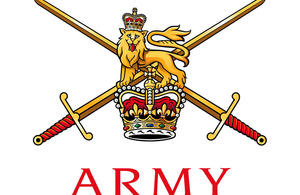Army 2020: transforming the British Army for the future
Today the Secretary of State announced the outcome of the Army 2020 review setting out how the Army will transform to become a smaller, integrated and more adaptable army than it is today.

British Army
The transformation will mean that the Service will be better able to meet the security challenges of the future.
The changes are seen as an essential part of the Defence Vision, stemming from the Strategic Defence and Security Review, and will mean that for the first time regular and reservist soldiers will be fully integrated within a single force structure.
Achieving this will mean that the Army’s ability to adapt and respond will be even more effective in the future.
Implementing these changes will involve a long period of transformation for the Army, which will require a generational change in its vision, structure, composition and capability.
Defence Secretary Philip Hammond said:
We have had to make tough decisions to implement our vision of a formidable, adaptable and flexible Armed Forces.
After a decade of enduring operations, we needed to transform the Army and build a balanced, capable and adaptable force ready to face the future.
Army 2020 will create a more flexible and agile Army. Unlike the past, it will be set on a firm foundation of men and materiel, well-trained, well-equipped, and fully-funded.
The regimental system will remain the bedrock of the Army’s fighting future.
Chief of the General Staff General Sir Peter Wall said:
The Army envisaged under Army 2020 will see our forces become better integrated and fully adaptable. It will capitalise on the powerful merits of a modern regimental system to deliver formidable effect when and where it is needed, and will create the best structure for the Army to face the challenges of the future.
The changes in Army 2020 will demand resilience, flexibility and genuine adaptability from our talented and committed officers and soldiers. It is inevitable that some units will be lost or will merge but we have done this in a way that I believe is fair across the whole Army.
A significant part of this change is the reduction in the size of the Regular Army as announced in the Strategic Defence and Security Review.
This has meant that adjustments have had to be made to the Army’s structure to ensure that it maintains the right balance of capabilities to allow it to fulfil its role within a joint and multinational environment in the future.
This rebalancing has resulted in the reduction of 23 units from across the Army. This will be achieved through either the merging or disbanding of regular units.
Driving this change is the need for the Army to redesign its purpose so that in the future it will be able to deliver a contingent capability for deterrence and defence, overseas engagement and capacity-building, while providing the necessary military aid as a UK-based Army to ensure homeland resilience.
A central plank of this will be to integrate the reserve elements into the Army structure with more clearly defined roles, as recommended in the Future Reserves 2020 study.
The change in emphasis to a more adaptable and flexible Army, capable of undertaking a broader range of military tasks, has required a significant change to the current structure of the Army which has most recently been optimised for enduring operations in Afghanistan.
The key elements of this new structure are the Reaction and Adaptable Forces. The Reaction Forces will comprise three Armoured Infantry Brigades and 16 Air Assault Brigade, trained and equipped to undertake the full spectrum of intervention tasks.
They will also be responsible for generating a Lead Armoured Infantry Battle Group and Lead Air Assault Group, capable of undertaking short notice contingency tasks. Given the high readiness nature of the Reaction Forces, they will comprise mainly regular forces with approximately 10 per cent coming from the Reserve Forces.
The Adaptable Forces will consist of a pool of regular and reserve forces capable of undertaking a variety of roles including overseas engagement and capacity-building, follow-on forces for future medium-scale enduring stabilisation operations, our standing commitments, and homeland resilience.
This pool of forces will be under the command of seven Infantry Brigade Headquarters during peacetime which will vary in size and geometry. These headquarters will also be Regional Points of Contact, responsible for the delivery of homeland resilience and engagement with UK society.
For operations, an appropriate force package will be selected from across the pool of forces based on the balance of capabilities required for that specific task.
Integral to the Reaction and Adaptable Forces will be the Force Troops which will provide a wide range of support such as engineer, artillery and medical capabilities from a centralised pool of resources.
The details of the reserve component structure and basing plan will follow.